|
Maserati has celebrated Ermanno Cozza’s
fifty five years of service. The Trident
has extended its heartfelt thanks to its long serving member
of staff for the passion and dedication he has displayed in
over half a century’s work at the Trident company. Mr
Cozza has become a legendary figure at the company and has
filled numerous positions down the years with competence and
professionalism.
Long time Maserati curator, he is a member of the Maserati
register’s technical commission and advisor to the Club
Maserati as well as Vice-President of Maserati’s ‘senior
group’ and the ‘Senior F1 Mechanics’ Club’. Cozza joined
Maserati in 1951 at an early age. He had just left technical
school and took up a position as an Engine Adjustor when the
company was in the hands of the Orsi family. Cozza worked
for many seasons in the pit lane alongside the technicians.
He was employed
first alongside Guerino Bertocchi and, later, Giulio Alfieri.
Under the stewardship of De Tomaso, he supervised the
salvation and restoration of a beautiful PininFarina
designed A6GCS berlinetta. Head of organising the Maserati
stand at classic car motor shows, Cozza is always ready to
share information on Maserati’s history and provide
technical background on the vehicles. Today he is a Maserati
consultant and maintains contact with Trident fans and
collectors from around the world.
The following two articles (the Belgian Grand Prix, 1933 &
the history of the Maserati racing V12) were written by
Ermanno Cozza and are courtesy of Maserati Corse.
Belgium Grand Prix - 1933
Spa-Francorchamps is a circuit where the House of the Trident
experienced one of its most memorable races ever thanks to
the courage and skill of Tazio Nuvolari.
The 1933 Belgian Grand Prix, and above all the series of
events in the weeks leading up to the race, opened a
window through which we were able to appreciate a
methodical, disciplined and well prepared Nuvolari. He
came across as a very different person to the disordered
'car wrecker' he was reputed to be.
Before reflecting on the race run on 9 July 1933, it
helps to give some background as, for once, the
agreements between the different scuderia were more
important than the result of the race.
After victory in the Montlhery GP and Campari's fastest
lap at Reims in the new Maserati Type 8 CM, many drivers
realised that, along with Alfa Romeo and Bugatti, there
was a new player on the block: Maserati. This subtle
feeling grew at the same time as a series of delicate
issues were evolving between certain figures running
some of the other teams.
The Scuderia Ferrari at the time was, without a doubt,
the slickest outfit. Though it had huge potential, it
had to work with characters who had strong personalities
and who had trouble in accepting Enzo Ferrari's
directives. Tazio Nuvolari, in particular, was a man who
felt he had a lot to prove.
In this game of cut and thrust, a technical problem also
emerged that called into question the validity of the
cars entrusted to Nuvolari. The scuderia attempted to
take the diplomatic route, hoping to reach a middle
ground between Maserati and Nuvolari. One reason why
this approach was adopted was because Enzo Ferrari
intended to purchase two Maserati 8CM vehicles.
It was clear that buying the cars from Modena was, in
reality, a tactic to put pressure on Alfa Romeo with the
objective of obtaining more competitive vehicles from
them. In any case, the abruptly interrupted negotiations
concluded with a meeting between Ernesto Maserati and
Nuvolari.
According to the terms of the agreement between Nuvolari
and Maserati, the man from Mantova was to have raced in
the Belgian GP in the same Maserati that Campari had
used at Reims. It was an 8 CM, number plate 9754 BA. The
chassis number is less certain; the 3001 chassis, it
turned out, belonged to another vehicle.
The accord foresaw the supply of the car and also
mechanical assistance to Nuvolari, enrolled for the race
by the Scuderia Ferrari.
Nuvolari's first contact with the new Maserati was used
to get to know how the suspension behaved and to study
the flexibility of the chassis resulting from the tug of
the strapping 8 cylinder, 3 litre unit capable of
putting out 240bhp at 6000rpm.
Though the rules laid down by Maserati did not allow it,
mechanics Campagnoni and Parenti, who had overseen the
development of the car on behalf of the House, made some
modifications to the front axle and also tried to
strengthen the chassis.
The work done, Nuvolari could count on a car that was
much more suited to his style of driving; he was primed
for victory. The great Montovan was so convinced he
could win that he sent Campagnoni to warn Varzi and
Chiron, the race favourites in an Alfa Romeo and Bugatti
respectively, to give way right from the start. The two
did not pay much attention to the words of the
'messenger' Campagnoni, especially as Nuvolari had been
drawn on the last row of the grid.
Tazio, though, knew he could win. It was not just
bravado; it was certainty. In the curves that twist through
the Ardennes woodland, he swept past his competitors one at
a time. The race turned into a triumphant procession, with a
lap record set each time Nuvolari crossed the finish line.
|
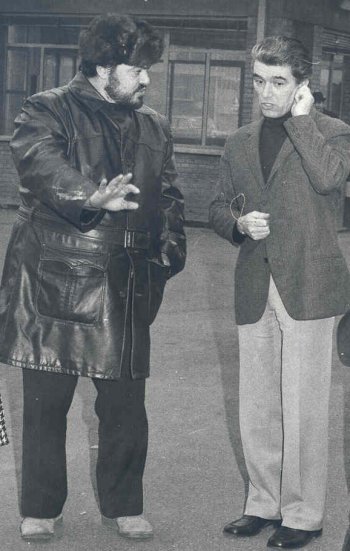 |
|
Today Ermanno Cozza (above, with Pavarotti) is a
Maserati consultant and maintains contact with
Trident fans and collectors from around the world.
Photo: Archivio Cozza. |
|
 |
|
The 1933 Belgian Grand Prix, and above all the
series of events in the weeks leading up to the
race, opened a window through which we were able to
appreciate a methodical, disciplined and well
prepared Nuvolari. Photo: Maserati Corse. |
|
 |
|
In
the course of its ninety year history, Maserati has
created a whole range of engine types. There have
been four, six and eight cylinder in-line V-engines
and 8 and 16 cylinder V-engines. The first 12
cylinder engine by Maserati was put together only in
December 1956. Photo: Maserati Corse. |
|
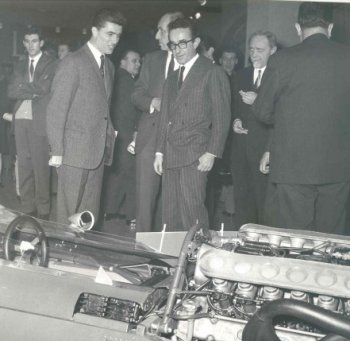 |
|
Long time Maserati curator, he is a member of the Maserati
register’s technical commission and advisor to the Club
Maserati as well as Vice-President of Maserati’s ‘senior
group’ and the ‘Senior F1 Mechanics’ Club’. Cozza joined
Maserati in 1951 at an early age.
Photo: Archivio Cozza. |
|
|
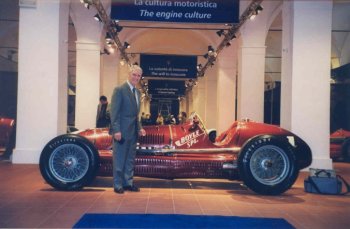 |
|
Maserati has celebrated Ermanno Cozza’s
55 years of service. The Trident
has extended its heartfelt thanks to its long serving member
of staff for the passion and dedication he has displayed in
over half a century’s work at the Trident company. Photo: Archivio Cozza. |
|
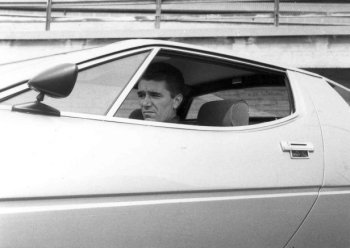 |
|
Ermanno Cozza has become a legendary figure at
Maserati and has
filled numerous positions down the years with competence and
professionalism. Photo: Archivio Cozza. |
|
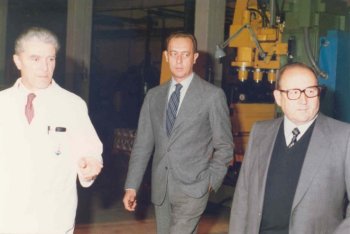 |
|
Ermanno Cozza (above, with Amedeo D'Aosta) was employed
by Maserati first alongside Guerino Bertocchi and, later, Giulio Alfieri.
Photo: Archivio Cozza. |
|
|
The victory at
Spa did not bring any improvement in the relationship
between Nuvolari and the Scuderia Ferrari. Ferrari, in fact,
employed only Alfa Romeo vehicles for the successive Coppa Ciano at Livorno. Nuvolari went off
to Tuscany with the Maserati 8 CM and set up his
headquarters on the outskirts of Livorno.
With the collaboration of his friend Borzacchini, early
in the morning he went out early to test his brakes and the
stability of the car on the mountain routes. He then snuck
back to his refuge, promising to teach those who had
under-estimated him a severe lesson. Contrary to all
expectations, two number 4 cars lined up at the start: an
Alfa Romeo and a Maserati. Nuvolari was in one of them and
he duly repeated his Spa performance. On the third lap, he set a time of 13'25". When compared
with his time of the previous year (13'42"), the
Nuvolari magic and his magisterial command of the track
was all too clear. His choice of car also proved
telling.
This is the tale of how a small automobile house from
the Bologna/Modena region crossed that of a great and
truly unforgettable driver.
Maserati
racing V12 engines
In the course of
its ninety year history, Maserati has created a whole range
of engine types. There have been four, six and eight
cylinder in-line V-engines and 8 and 16 cylinder V-engines.
The first 12 cylinder engine by Maserati was put together
only in December 1956. This engine was developed to counter
the growing competition put up by Vanwall when it was
decided that the six cylinder mounted on the 250F had
reached its final stage of development - four years after it
made its debut.
Back in 1955 work had been done on an opposed 12 cylinder
engine but the set up was discarded as it meant the
construction of the new type of chassis. It was decided to
work on that from the 250F to use and adopt a 12 cylinder
60° V-engine which fitted well with the title winning
chassis.
The first experiments carried out on the test bench
surprised even the engineers: the engine was capable of
putting out 320 bhp at 12,000 rpm. Protests continued
throughout January 1957 with the aim of making the power
curve smoother.
The elevated power of the engine, decidedly high for the
era, pushed the then rivals, Ferrari, to accuse the Modena
house of producing unsubstantiated data. The competition
could count on engines able to produce around 280 to 290 bhp.
To prove that the power of the engine was in fact real, the
engineer who had worked on it, Alfieri, invited a group of
journalists along with the engineer, Canestrini, to see the
engine in action for themselves. The group watched
disbelieving as the needle on the scales touched 32 kg when
the engine was running at 1800 rpm.
The power supply itself was high, kicking in at around 5000
rpm.
In February the engine was mounted on the 250F to be driven
by Juan Manuel Fangio. The five time champion turned on the
engine at the autodrome of Modena and began a test, the
results of which would be very promising.
The enthusiasm of the Argentinian for the new engine was not
shared by the other drivers. They concluded that the power
supply was too sharp, so much so that exiting the Campale
curve they were often left high and dry.
Tests continued at the Monte Carlo Grand Prix, at Reims, and
at Pescara but the objective of the technicians was to have
the 250F in tiptop condition for the Italian Grand Prix at
Monza. At the wheel of the single seater, baptised 250F T2,
was Jean Behra. He was comfortably able to compete with the
more modern Vanwall but was unable to finish the race
because the rear tyres wore out too quickly. The tyres could
not cope with the brusque exhilaration produced by the
powerful engine.
Maserati's retirement from competition interrupted,
unfortunately, the development of the 250F and its promising
engine. However, the engine was used a year later, in 1958,
after the Federation imposed the limit of 3 litres for
engines in the Sport category that participated in the
Campionato Mondiale Marche. For publicity reasons a Sport
vehicle with a 12 cylinder 3000cc engine was created in
three versions: 73x56 70x64 and 68x68 but the project was
abandoned after the company went into temporary
receivership.
Even after its official retirement from racing at the end of
1957, Maserati always lived for research without ever giving
up its competitive spirit.
Although much reduced compared to the past, innovation was
always one of the main principles that inspired the House of
the Trident.
In 1963 a 1500cc engine was constructed in line with the new
Formula One rules from 1961.
The project, again overseen by Alfieri, dated from that year
but was shelved in favour of working on production cars. The
Type 8 engine, a 12 cylinder 60° V-angle units, with the
gearbox and transmission in a single unit, was equipped with
a Lucas fuel injection system and was mounted transversely
in the centre of the car. The first tests on the bench were
conducted in April 1963. The engine put out 200 bhp at
12,000 rpm.
More tests were conducted from time to time throughout the
year and by the time it was considered that the engine was
reliable, the F1 regulations would remain in place for only
another year. Notwithstanding this, interest in the engine
from potential clients was very high. Maserati, however,
decided not to continue to invest in this engine.
In the meantime the 12 cylinder 3000cc units would
substitute the four-cylinder 2800cc installed on the
Birdcage Type 63 of the Camoradi, Cunningham and Serenissima
scuderie.
With the new Formula One regulations of 1966, the capacity
of the engines was raised to 3 litres and Maserati had the
opportunity to begin a collaboration with Cooper that began
with the signing of an agreement in 1965.
Formula One was developing well and ever more investment and
technological development was needed to compete in it.
To satisfy the requests of Cooper, Alfieri opted for a 12
cylinder which, in the summer of 1965, had already undergone
some experiments. A 3000cc engine was tested in a 70x64 form
in 1962 with the Lucas injection system and electronic
ignition. It put out 340 bhp at 10,000 rpm.
The first tests of the Maserati powered Cooper (Type 9
F1/66) took place at the Goodwood circuit. A year later at
the Mexican Grand Prix John Surtees was able to benefit from
the great work of the Maserati technicians.
The small differences of agreement that existed between
Cooper and Maserati were put aside when both companies
worked on the new engine, the Maserati Type 10/F1. The
engine had three valves per cylinder, transistor ignition
and Lucas injection. It weighed only 171 kg and yet
developed 380 bhp. The new Cooper chassis, the T81, proved
that it was up to the job and allowed Rodriguez to take the
South African Grand Prix in 1967.
That engine, the development of the 12 cylinder originally
designed in 1956, was able easily to stand up to more recent
engines. The fact that it could do this is testimony to how
far ahead of its time the first V12 Maserati engine was.
|
|
|
|